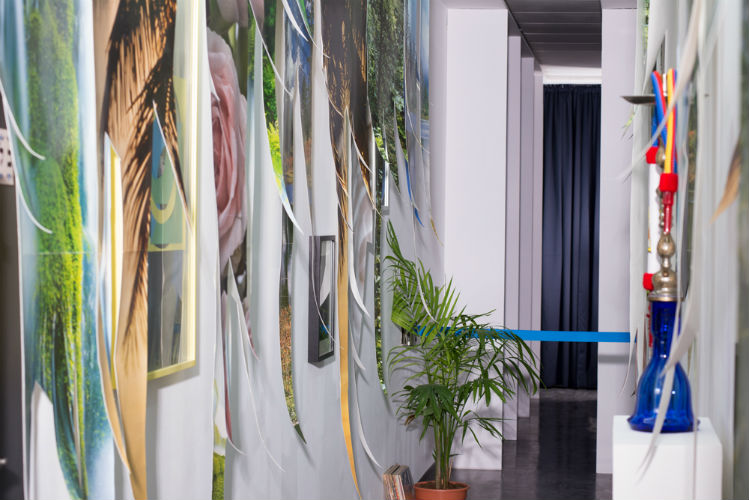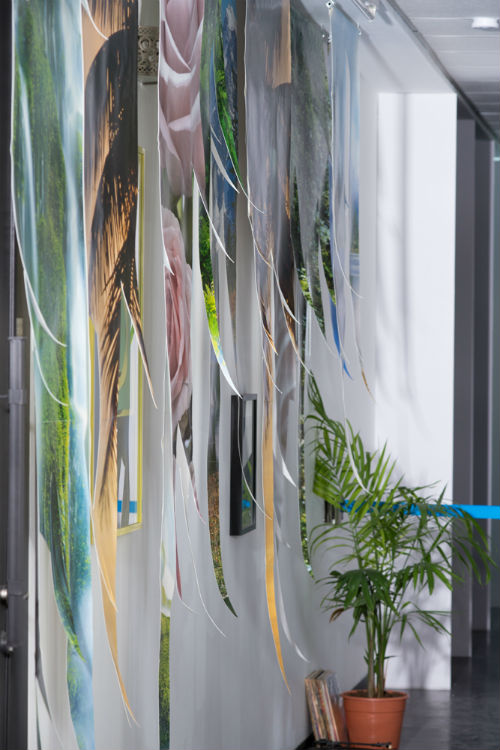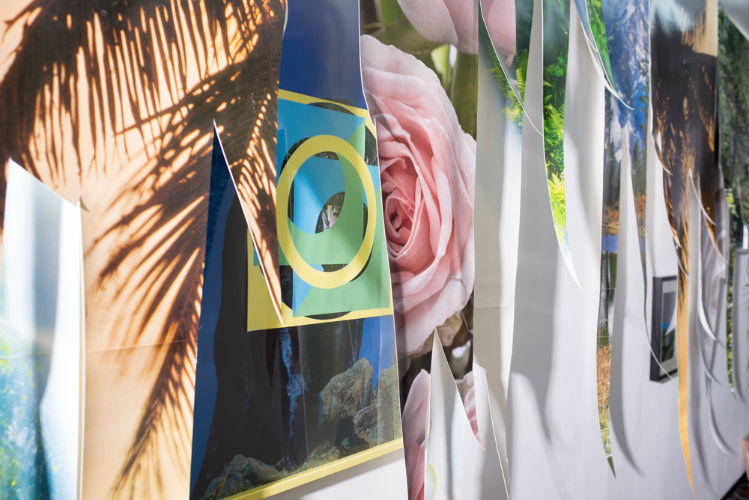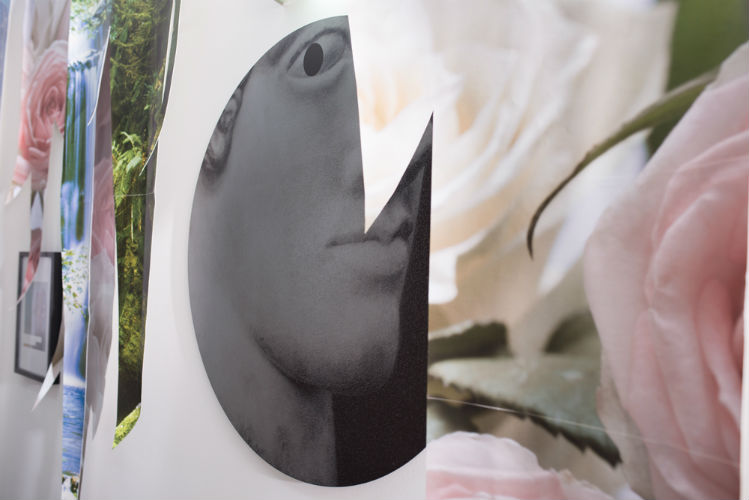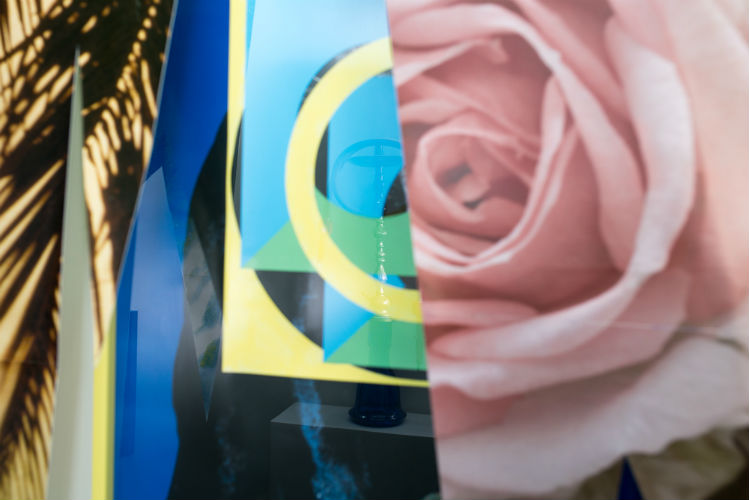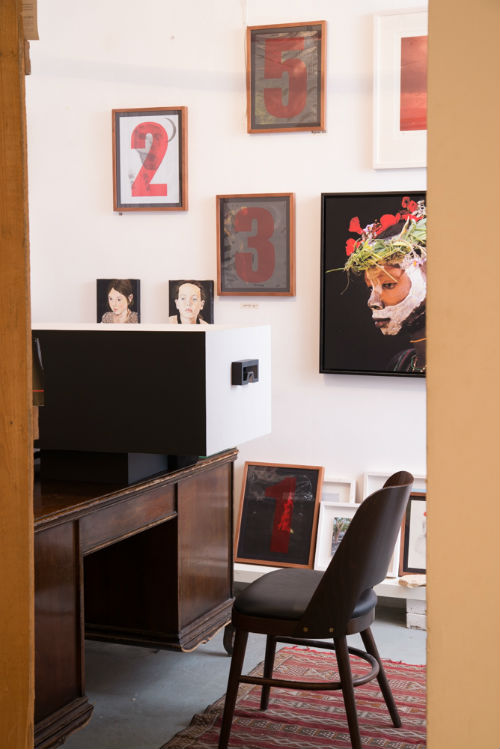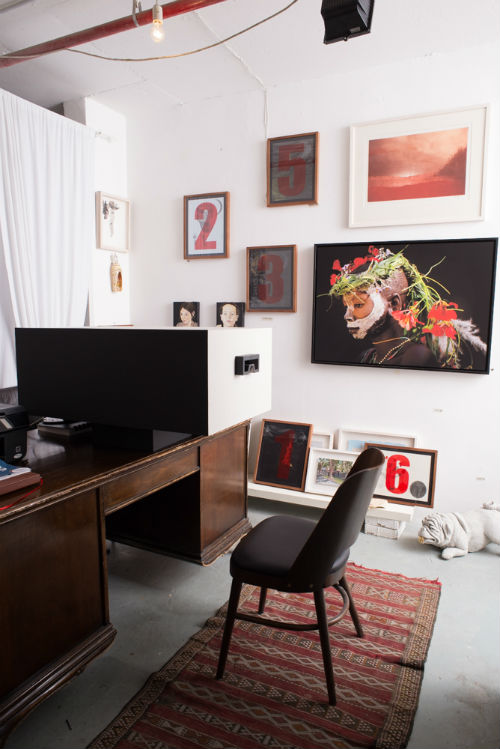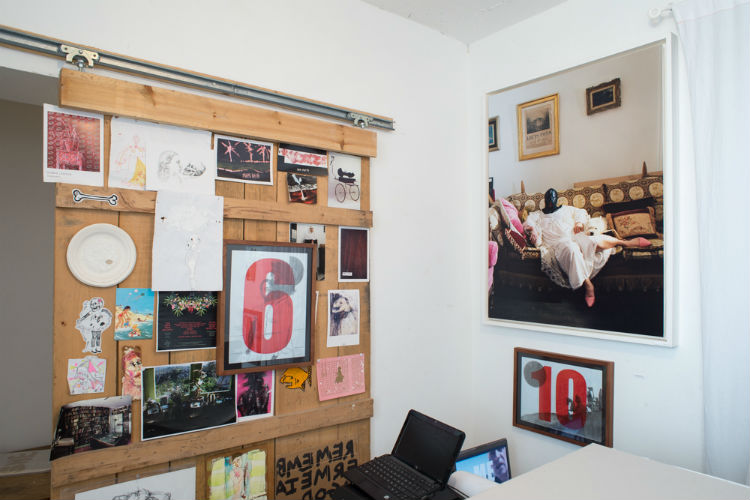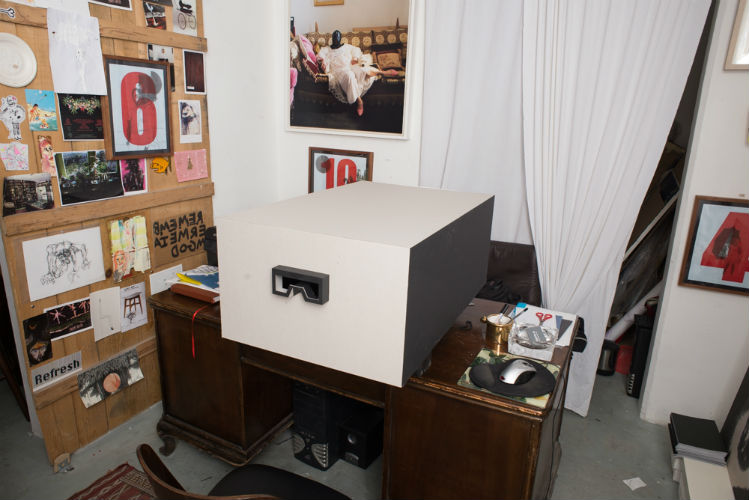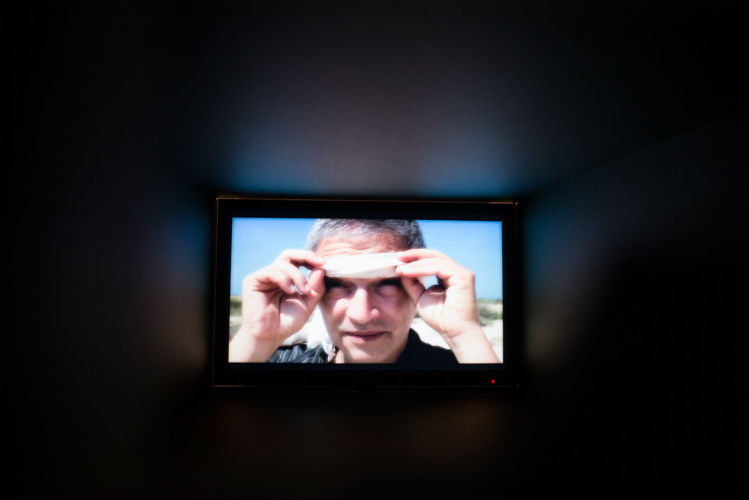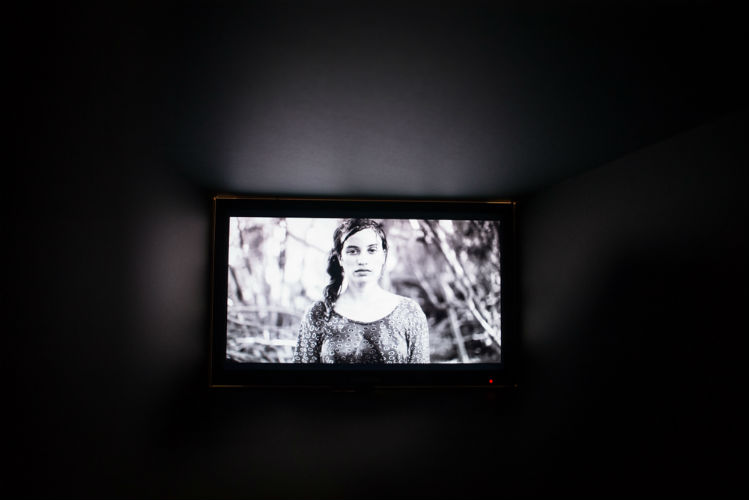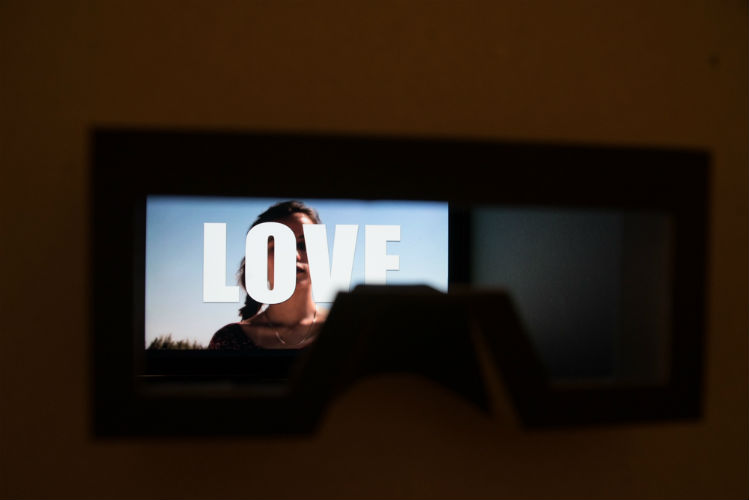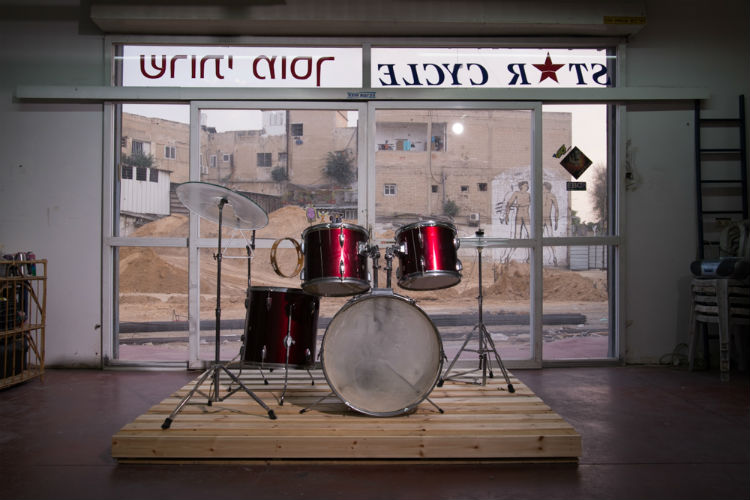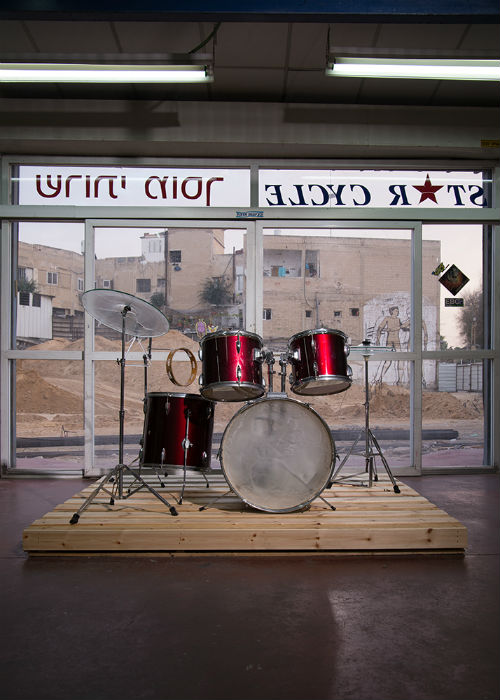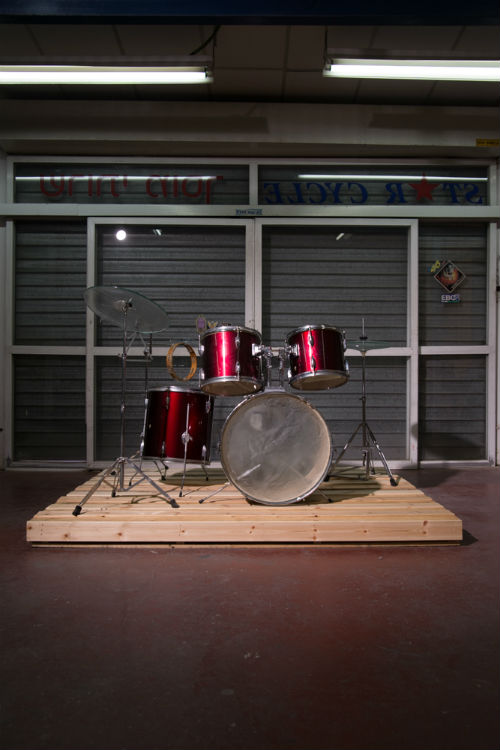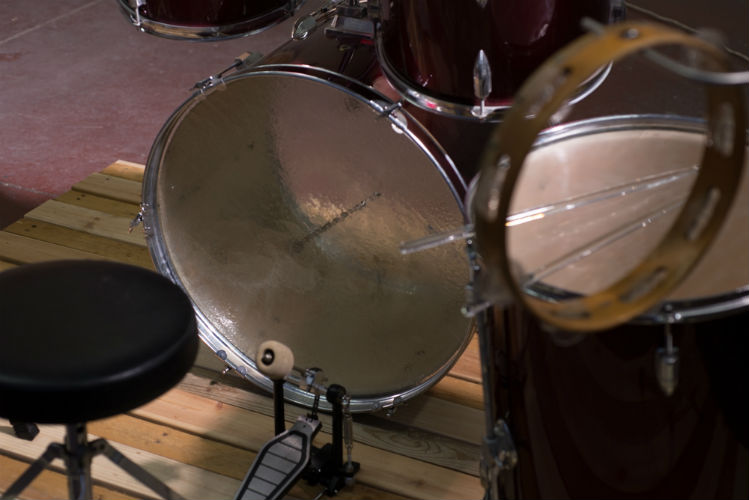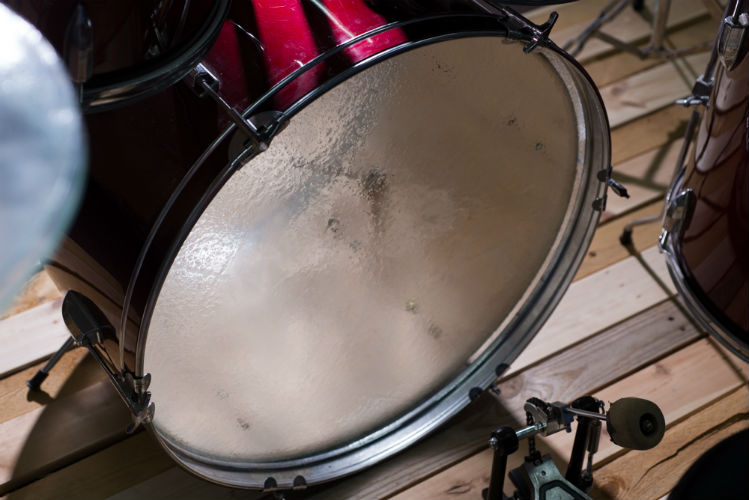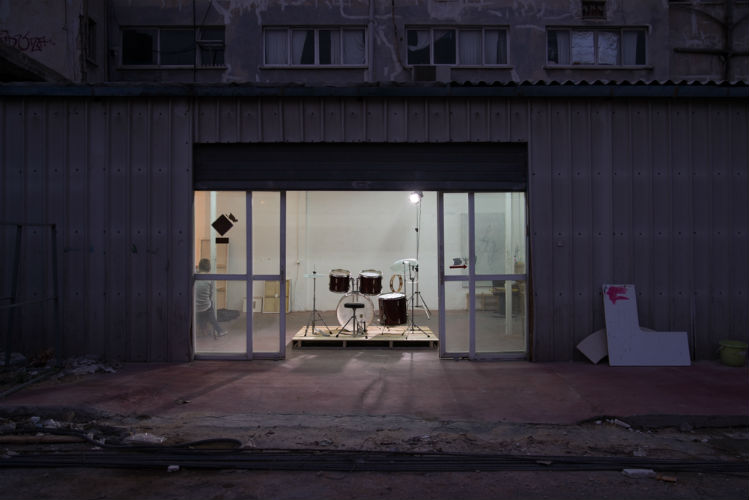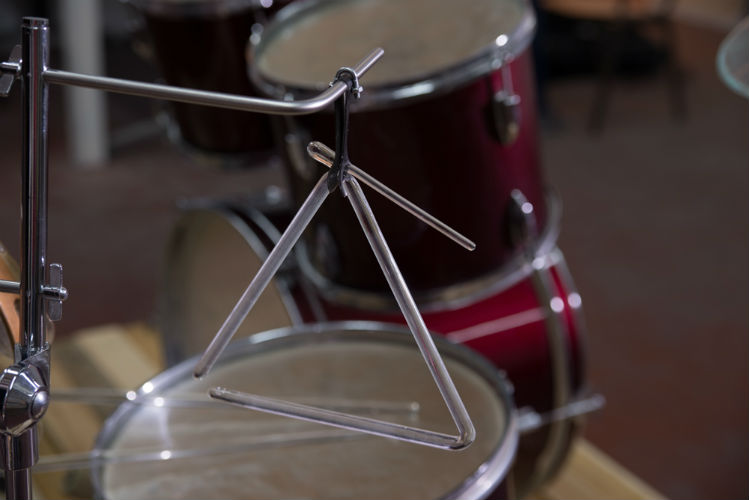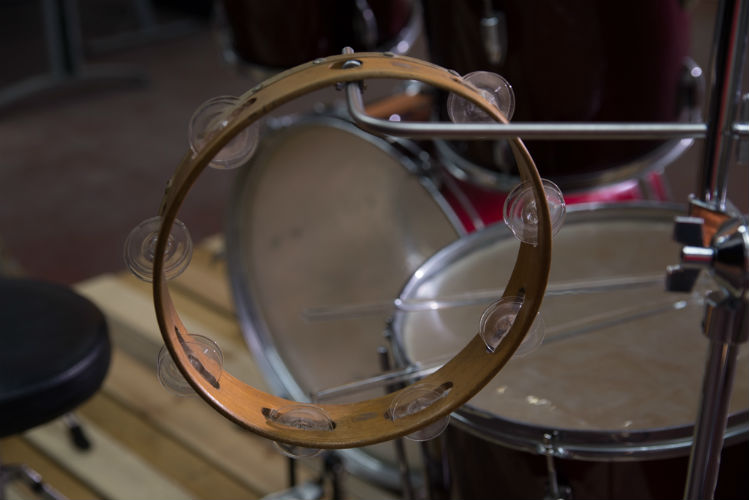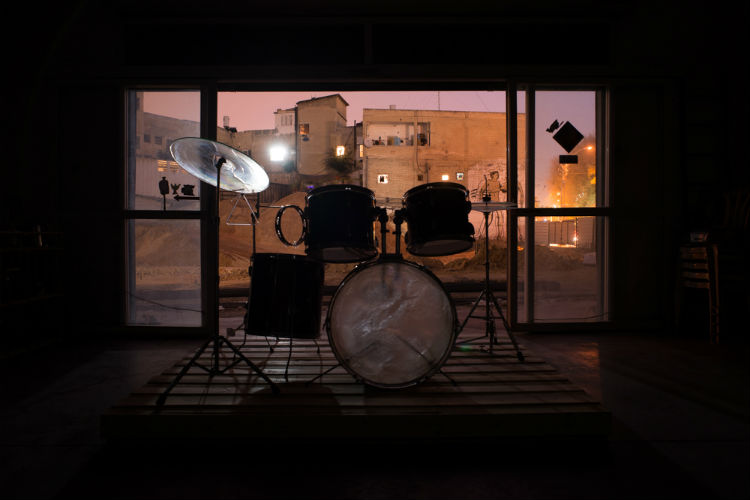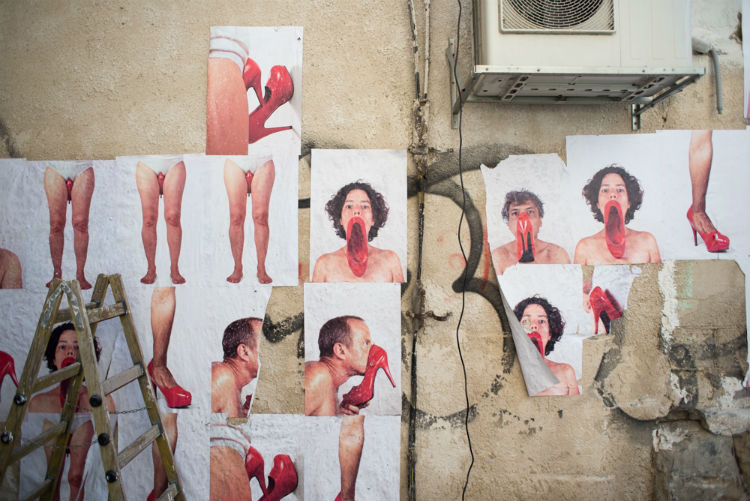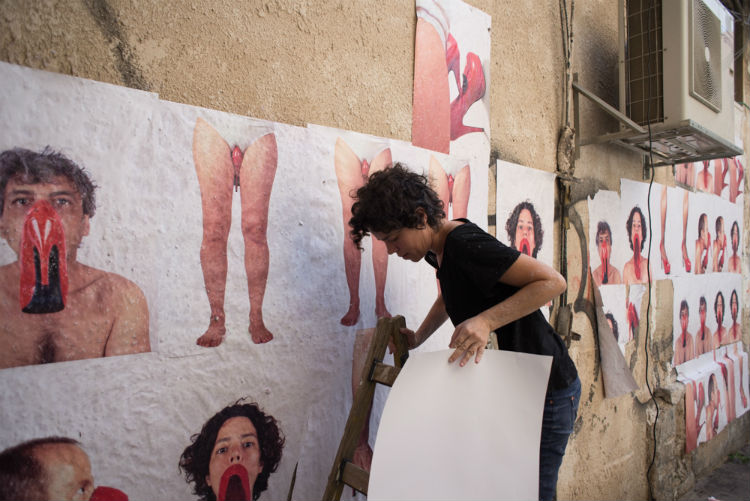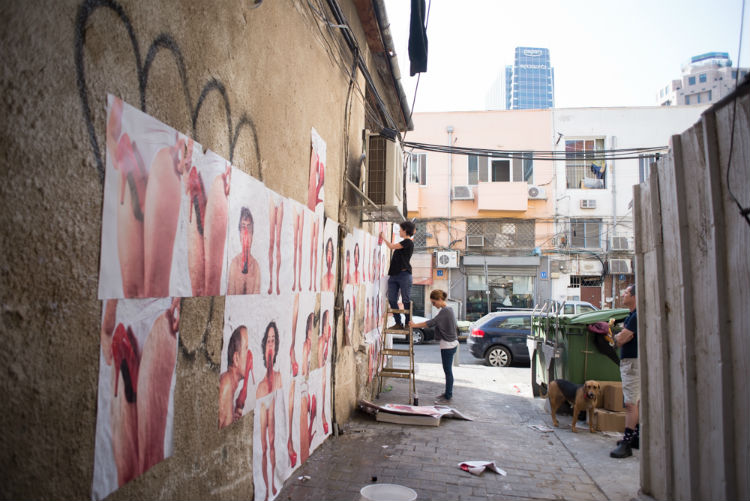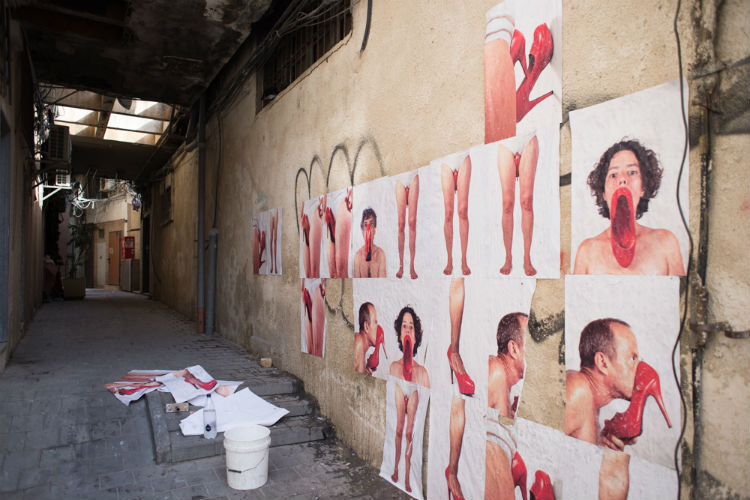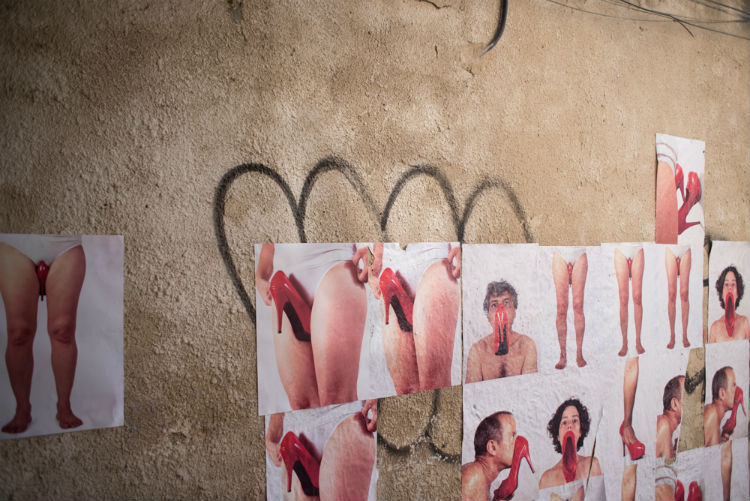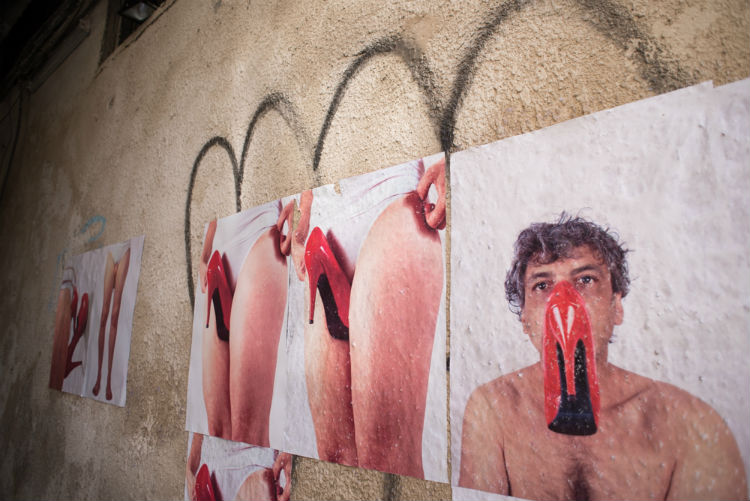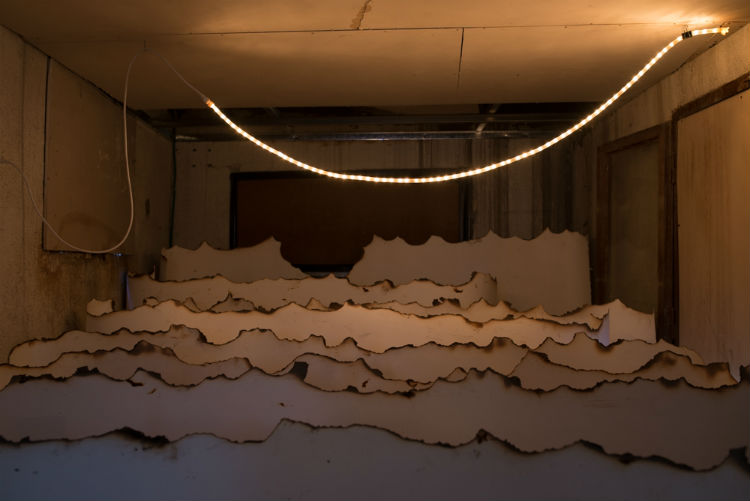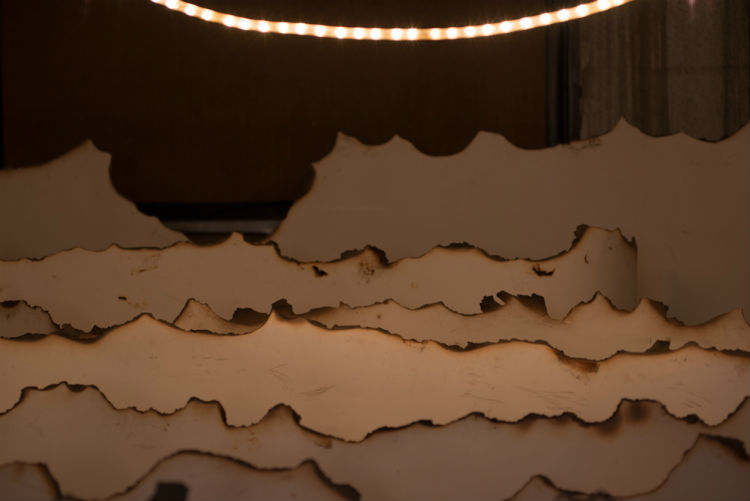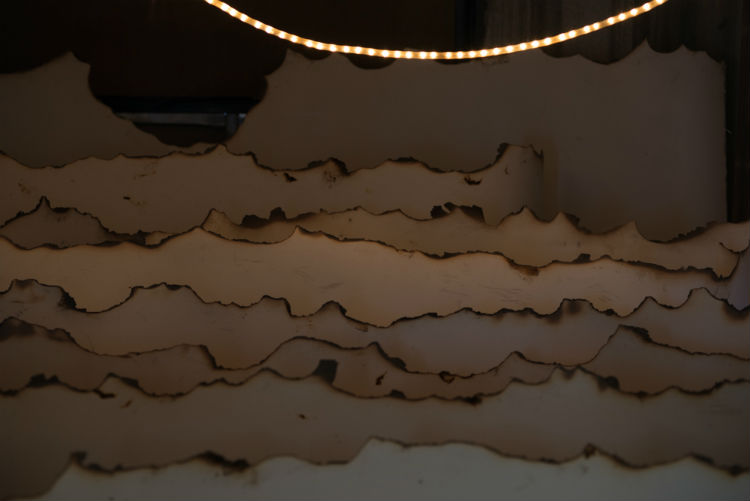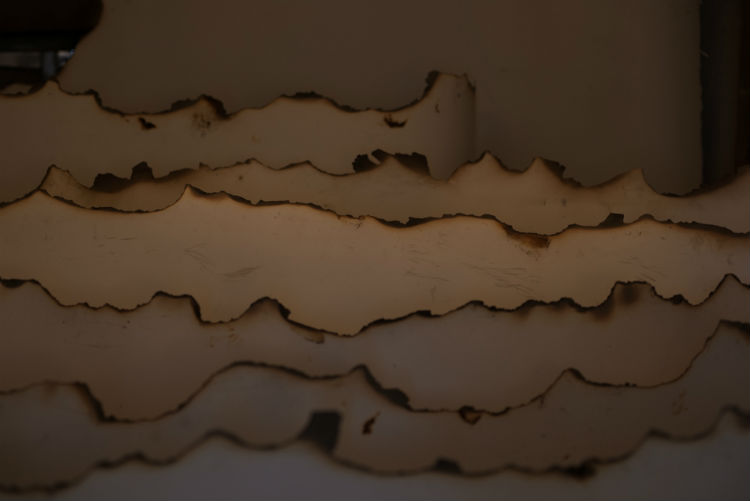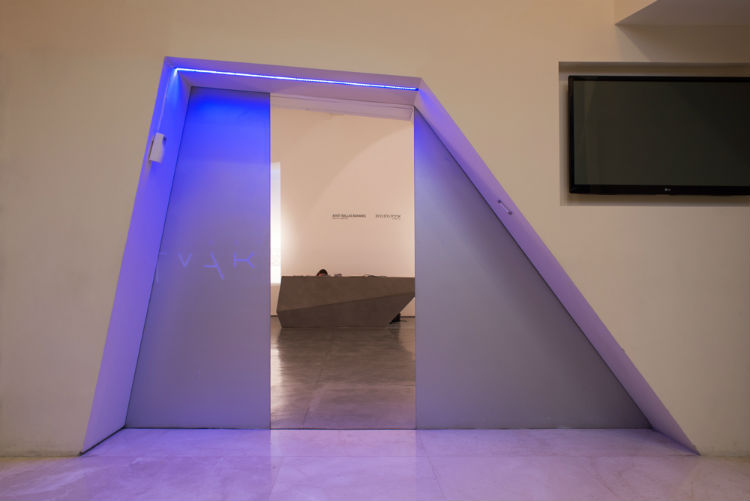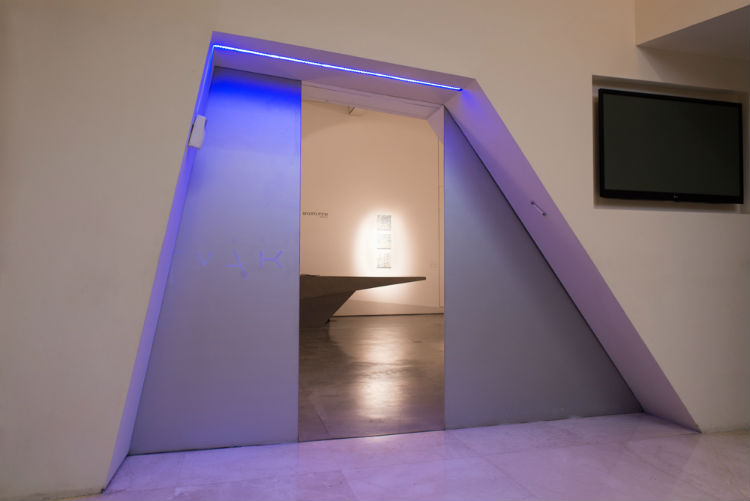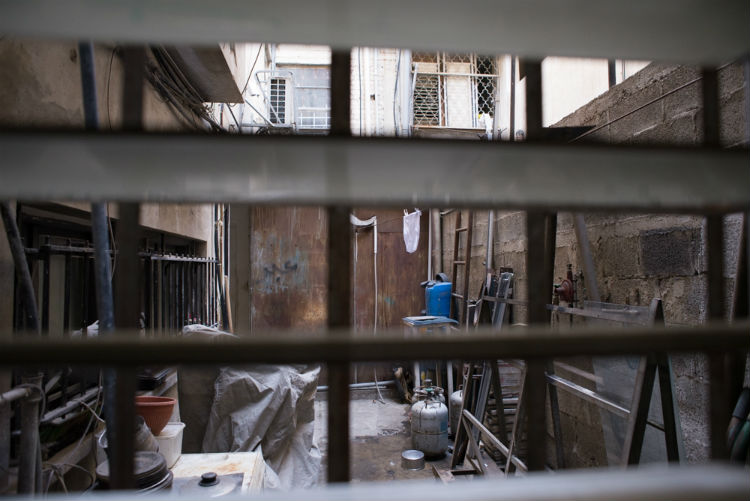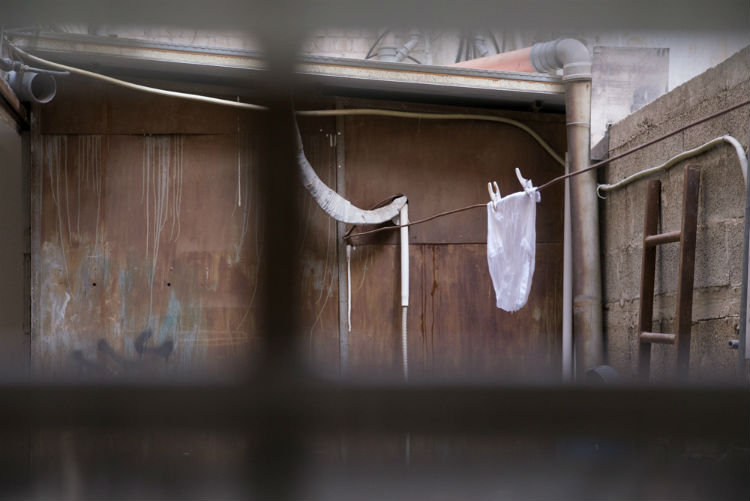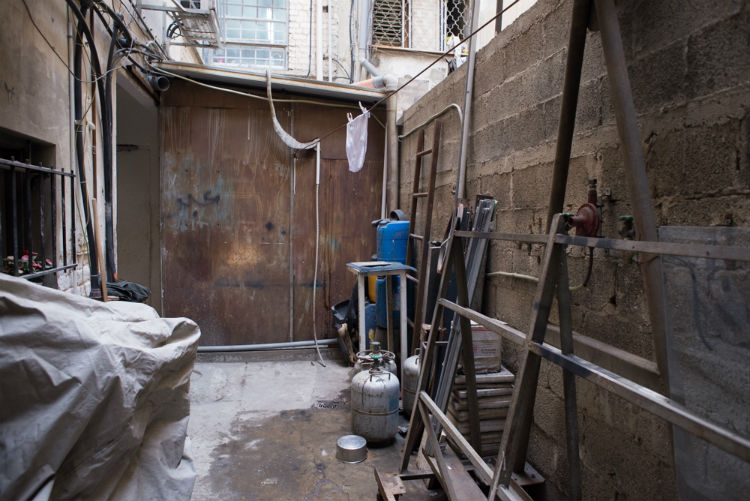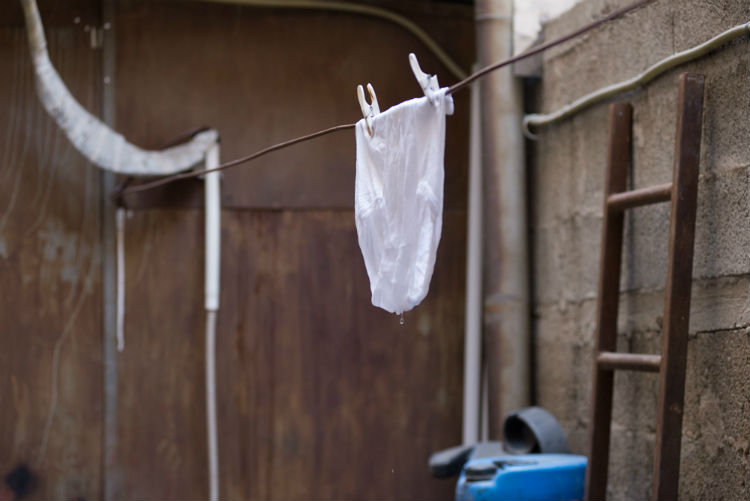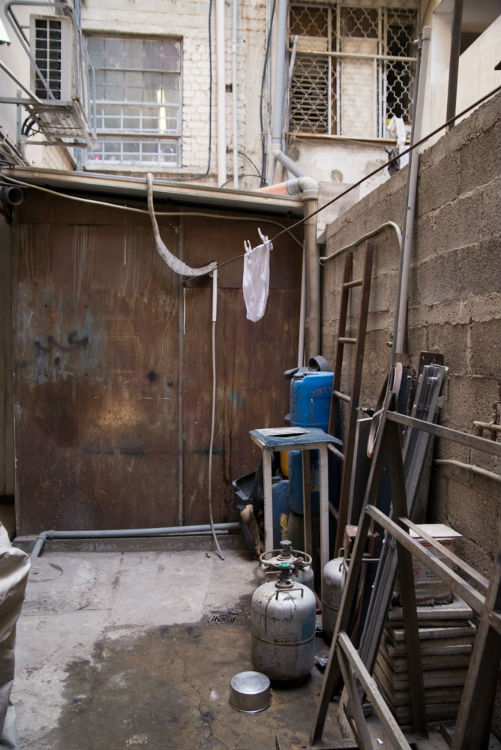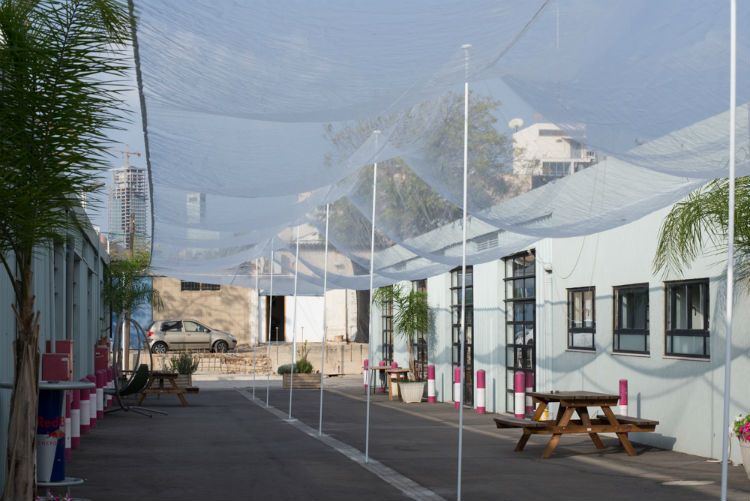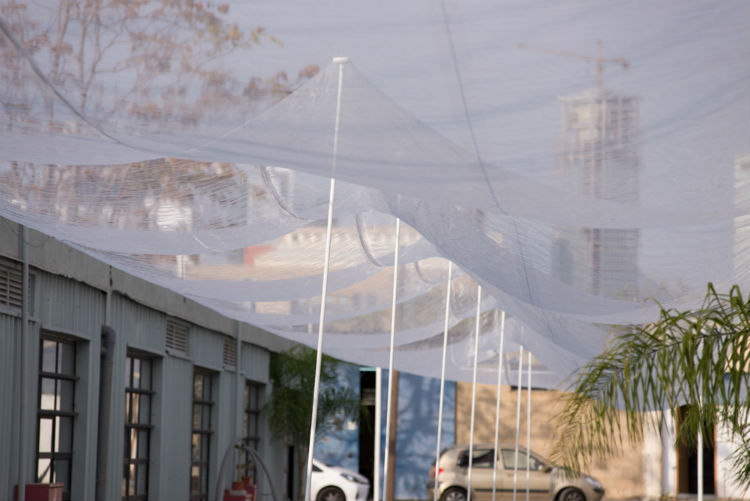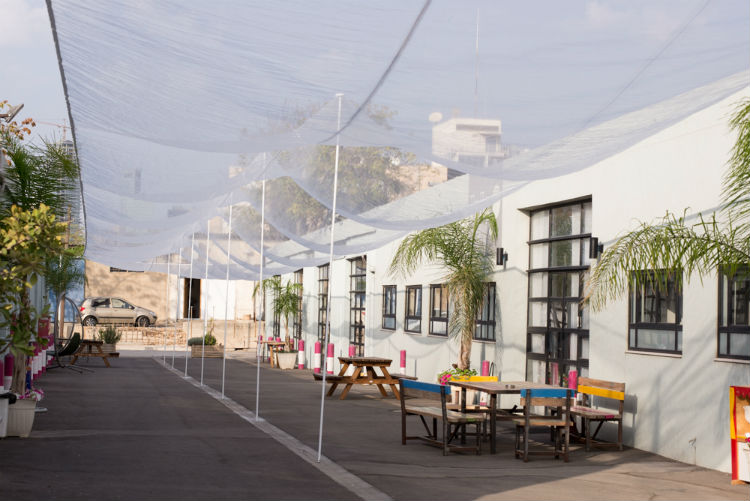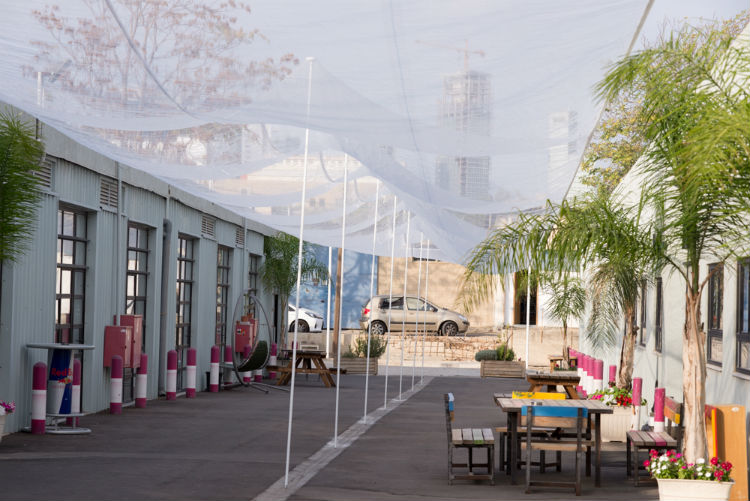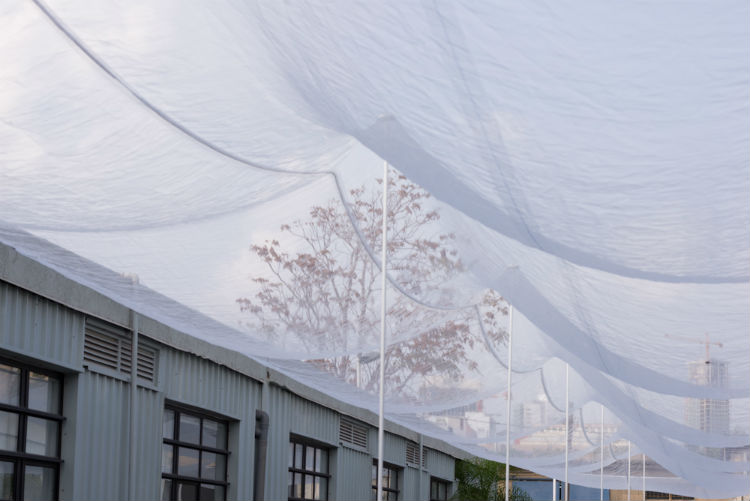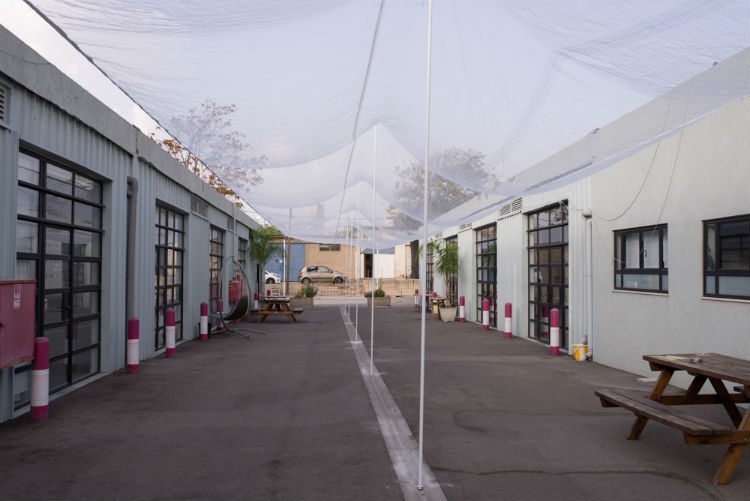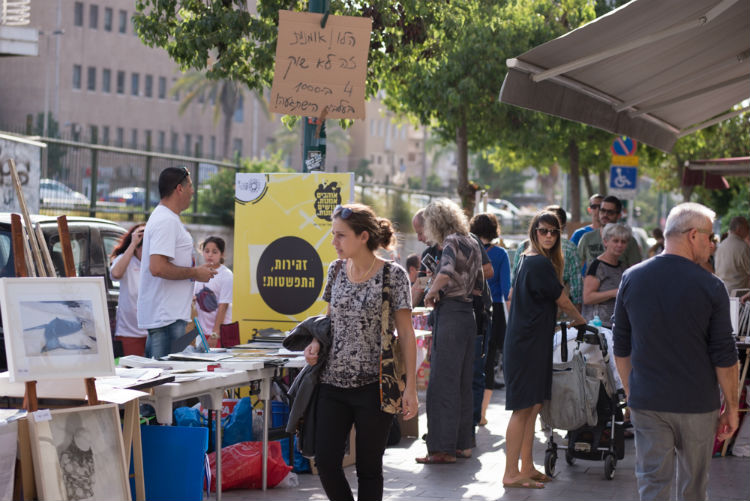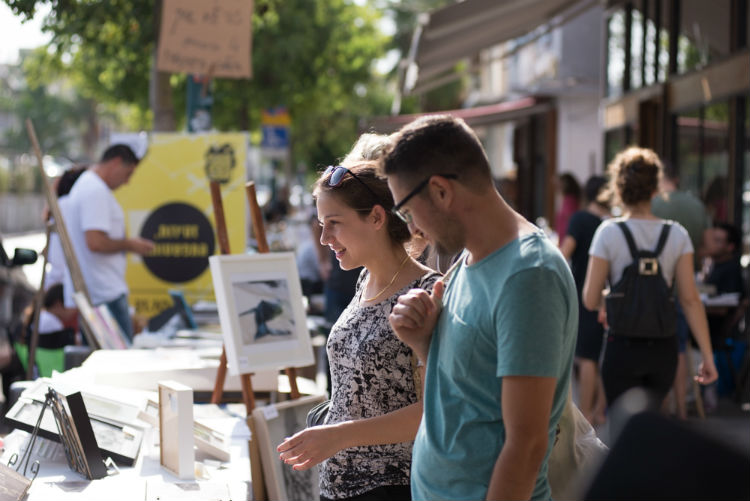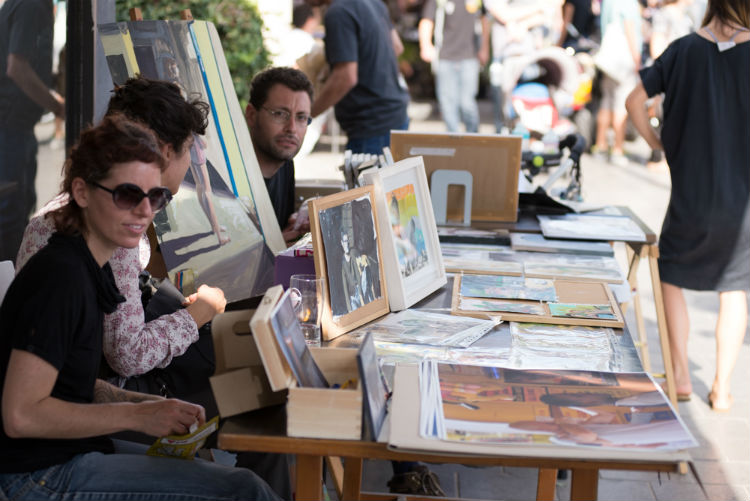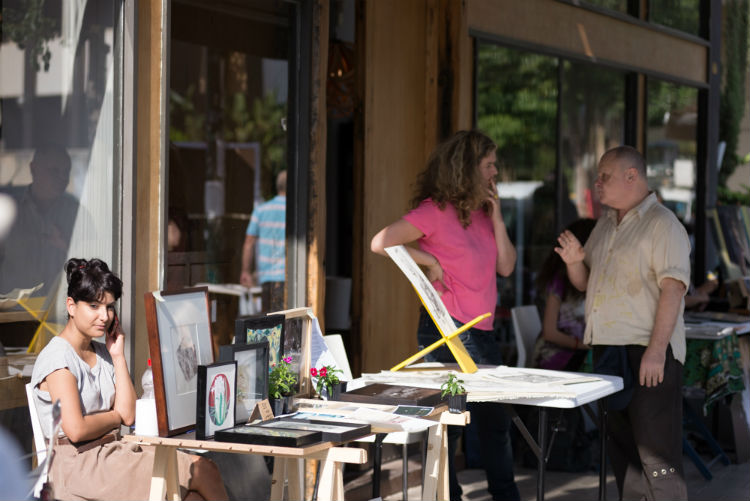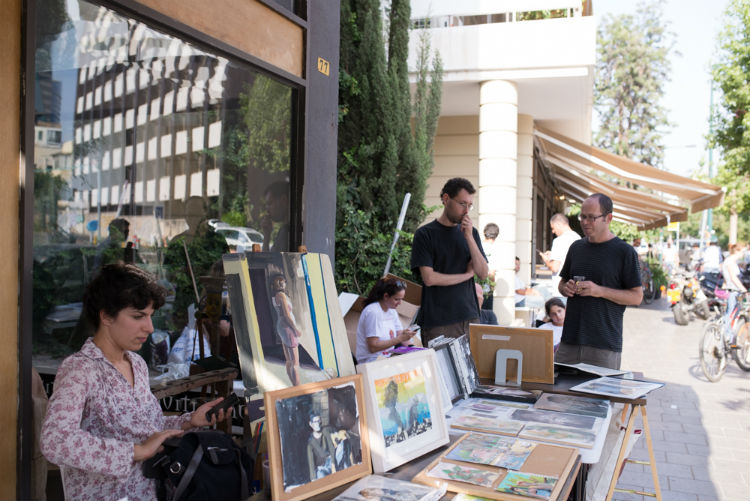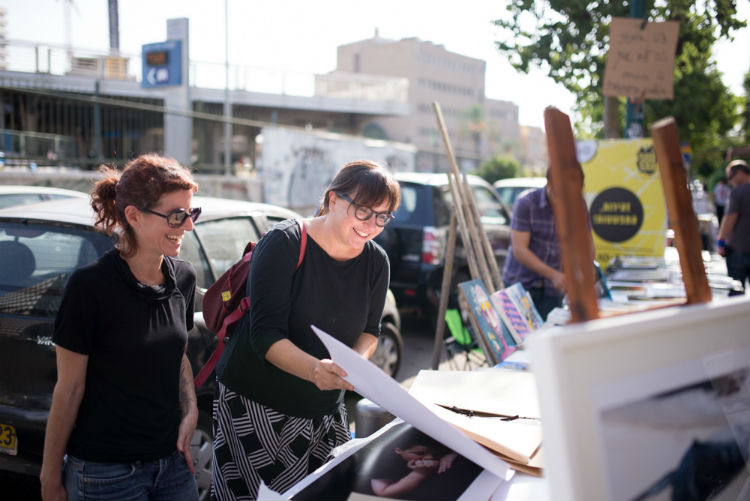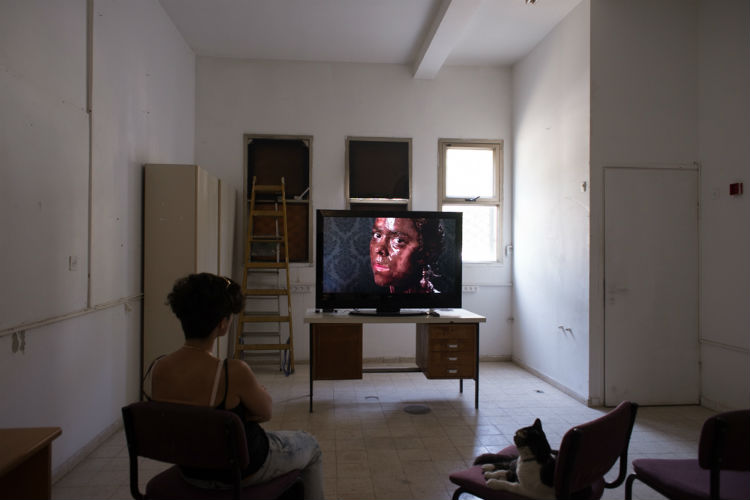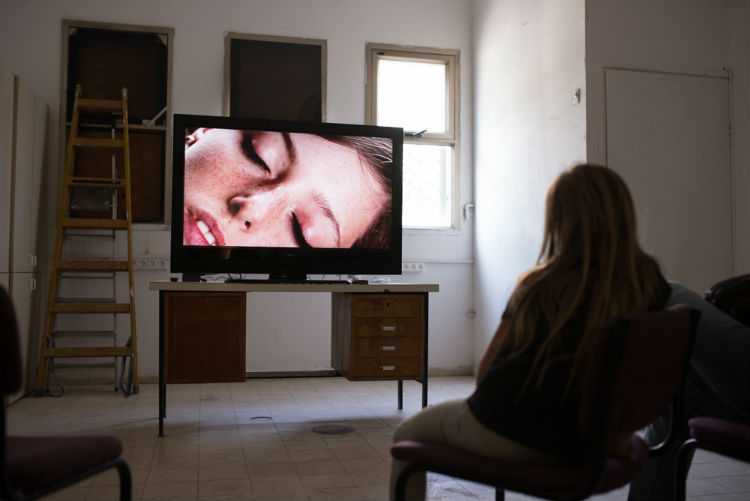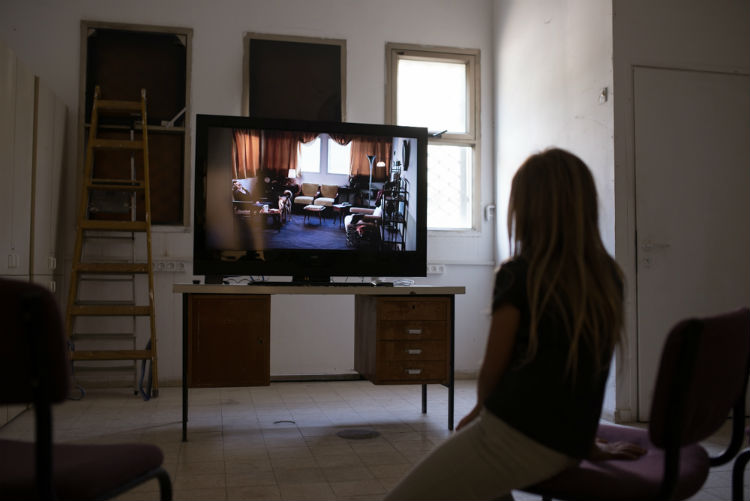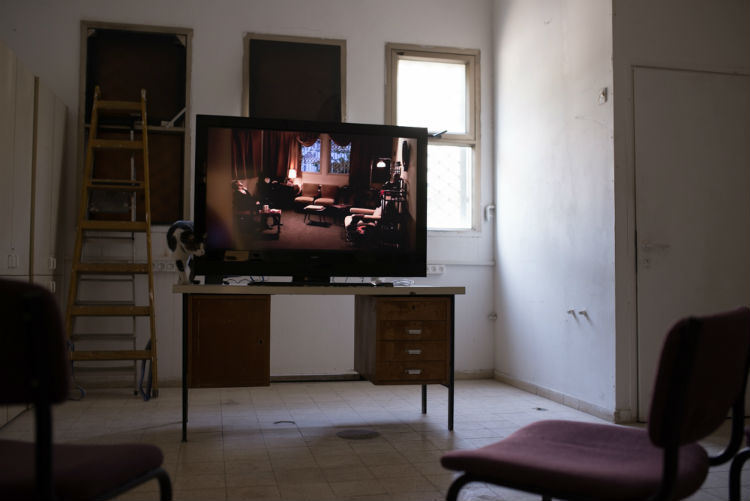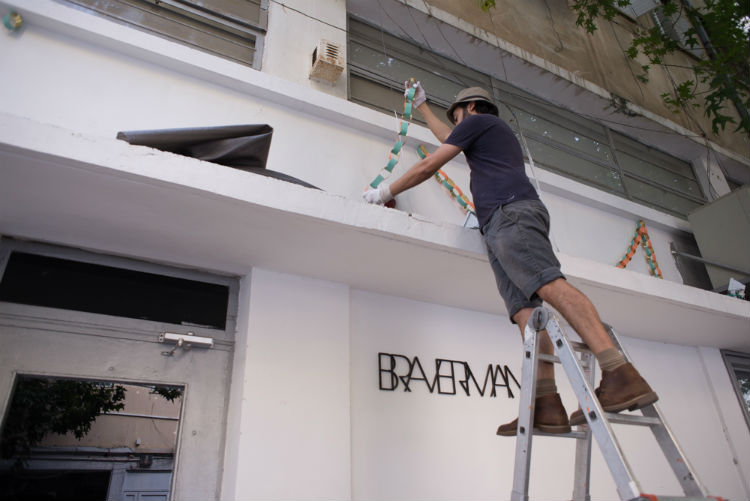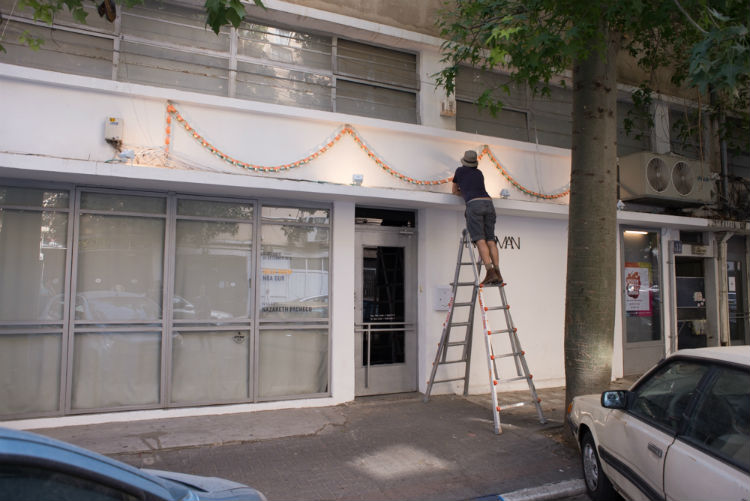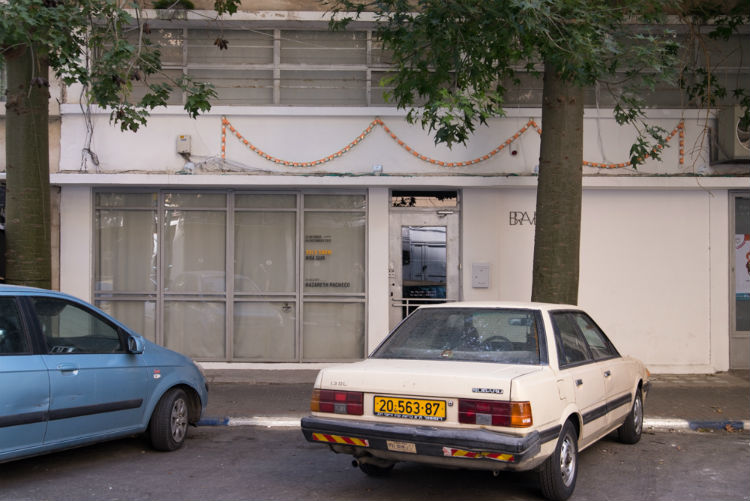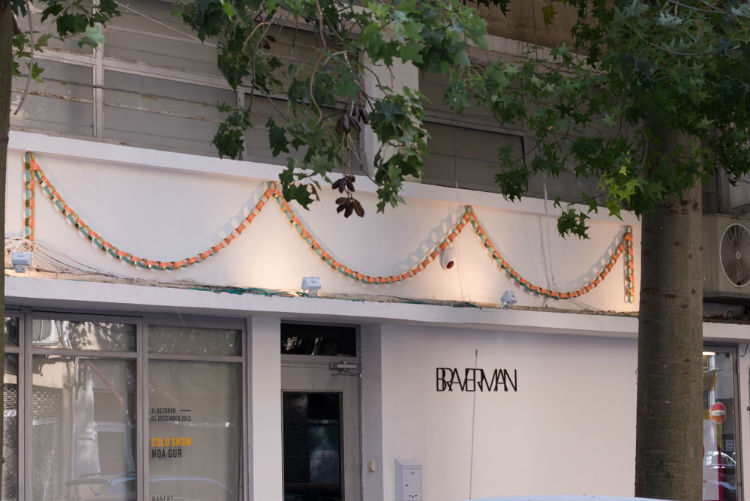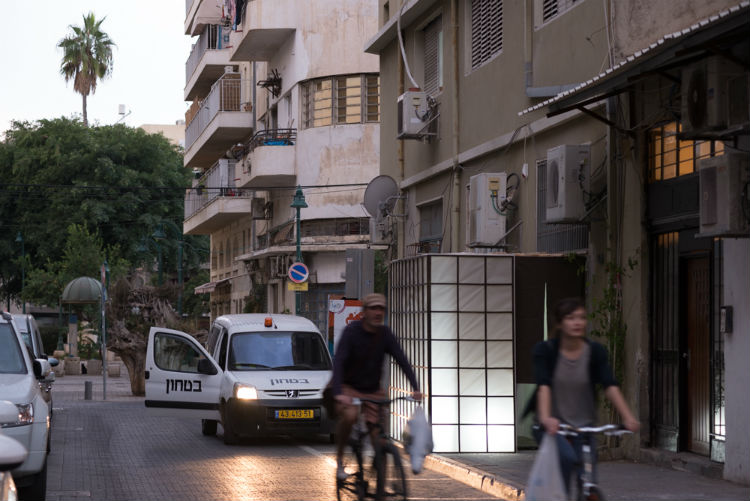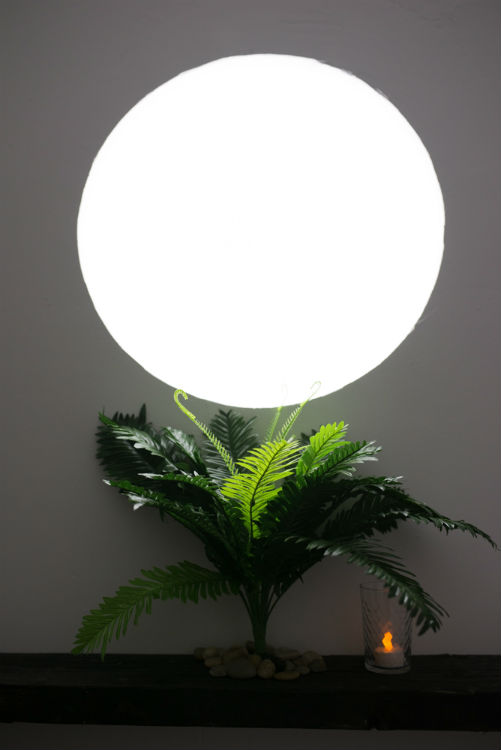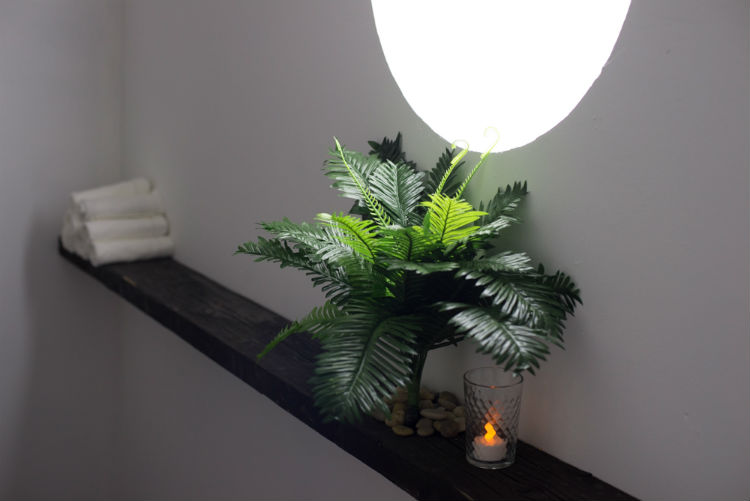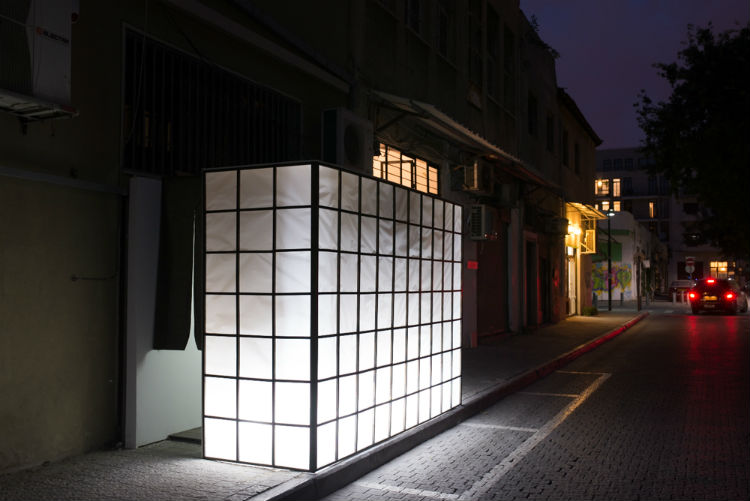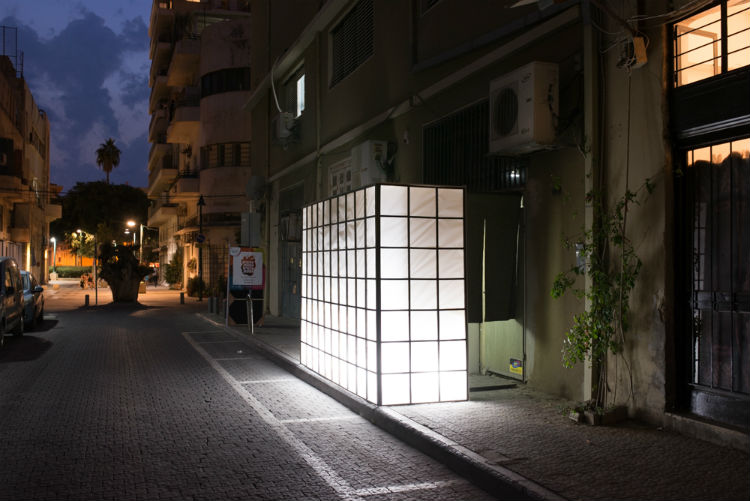Caution, Expansion!
October 31st to November 2nd
The project Caution, Expansion! endeavors to push the boundaries of intermediate spaces trapped between the gallery space and the public sphere that envelopes it. It is an act that wishes to transgress the defined boundaries of the "white cube" and turn "gray areas" such as storage spaces, utility rooms, facades, garden patches, and functional passages into legitimate display spaces.
In contrast with the perception of artist, theoretician, and art critic Brian O'Doherty – who was one of the firsts to view the space of the "white cube" that maintains sterility, objectivity and distance from the outside world and its influences, as a space that provides the ideal conditions for displaying art – the project is founded on a view that sees intermediate spaces as places that allow slippage and a dialogue between the outside and the inside, between the private and the public, between the random and the planned.
The attempt to transgress boundaries and expand the possibilities of display is a curatorial tactic that allows the displacement of focus and shift of attention from the formal and official to the daily and minor. It is a space that gives a platform to unceremonious art, art that responds to the physical conditions and the formal and functional potential of the exhibition venue and aspires to blend into it, like the installation Duty Free by artist Adi Dulza, who examines the display possibilities contained in a functional passageway like a corridor. Using rolls of photo wallpaper, objects, and photographs, Dulza created in the corridor of the office floor, on which ZIZ Gallery is located, an encyclopedic collage that unravels a chaotic and multicultural narrative of fabricated history within a fictitious landscape that simulates a sacred site – a place of pilgrimage.
The project Caution, Expansion! Is the product of collaboration between the Art Department of the Tel Aviv-Yafo Municipality and a large group of galleries scattered in different areas of the city, in the desire to expand the dialogue between the different parties and offer the galleries' artists an additional platform for exhibition. The project is comprised of a series of site-specific installations, which were created especially for the events of Loving Art. Making Art. 2013, and will be installed near and inside each of the participating galleries for the duration of the three days event.
Curator: Sally Haftel Naveh
Participating galleries:
1. ZIZ Gallery, Adi Dulza, Duty Free, 2013, installation, mixed media
In the installation Duty Free Adi Dulza converts the functional passageway of a corridor in the office floor on which ZIZ Gallery is located into a sacred site – a place of pilgrimage. The rolls of photo wallpaper featuring prints of pastoral-synthetic views of golden beaches with palm trees in sunset or breathtaking snowy peaks, dangle from the corridor's ceiling and along its walls. From between the layers of wallpapers appear glimpses of objects, photographs, and collages of historical structures, archeological sites, and canonical and contemporary artworks. Adi Dulza creates an encyclopedic collage that recounts a multicultural and chaotic narrative of fabricated history in a made-up landscape. Through a play of revealing and concealing, through synthesized nature inlaid with fragments from history, culture, and art, he leads the viewer towards a spiritual climax, to the transcendental experience of standing before the heavenly light (of the neon). The formal and chromatic excess alongside an overdose of visual "trash", surrender the weakness of the image in a consumer era of plenty and surplus, and at the same time points at the spiritual and religious potential embodied in it.
2. Gallery P8, gallery artists, Loving Art. Buying Art., 2013, event, mixed media
The cooperative gallery P8 will hold the event "Loving Art. Buying Art. in the backyard and pavement in front of the building that houses the gallery, on Yehuda HaLevi Street. In the event they will open an art market in which the gallery artists will offer their artistic produce at a fair price to passersby. By taking art out of the ivory tower of the gallery walls and into market stalls where it will be sold in unprecedented prices, the gallery artists wish to voice and raise awareness to the social status and financial state of the artists. Much has been said about the status of the artist as the one who feeds the financial pyramid of the art world while he is not fed, which begs the simple question: why? After all, artists have the option of trading their artwork and exhibiting it for profit, so why is this not the case? Perhaps the answer lies in the artists' intense need to exhibit their artwork at any cost, as a result of which the financial reward and comfort take the back seat. The event Loving Art. Buying Art. seeks to point at the fundamental need of artists, just like everyone else, to earn their living.
3. Braverman Gallery, Reuven Israel, C.C.C., 2013, sculpture, brass and paint
A colorful decorative chain adorns the frieze of Braverman Gallery's façade. In the work C.C.C. Reuven Israel kept the shape of a traditional and plain looking chain used as decorations for Sukkoth, but replaced the fragility and transience of the paper with the metallic durability of brass sheets. The decoration's rich colors also maintain their affinity to the original in sugary and seductive pastels that flirt with passersby. The placement of the chain on the distinctly ornamental architectural element imbues the simple object with a distinguished air and prestigious appearance, like the stucco decorations adorning façades of neoclassical buildings. In this work, Israel does not limit himself to artistic discourse on issues of 'high' and 'low' (the way an artistic act transforms a simple and unsophisticated item into high art, or alternatively, how a sculpture with artistic merit can turn into a purely decorative object), but rather extends the discussion to issues of center versus periphery, imitation, and adoption of aesthetic values as a cultural strategy, while at the same time offering a criticism, with a lot of humor, on "The Want of Matter" and the diminution of decorative values that are a part of the local artistic tradition.
4. Alfred Gallery, Yael Amit, Black Sunset 2 (Burning Hole in My Heart), 2013, installation, Bristol paper
Yael Amit's installation Black Sunset 2 (Burning Hole in My Heart), stretches over the entire space of Alfred Gallery's storage loft. Using trivial actions like cutting, gluing, and sooting Bristol paper, Amit outlines a fragile and melancholic linear image of a sunset. Two-dimensional Bristol strips stretch across the space and mark a horizon line of sorts, producing multi layered topography, like a three-dimensional theater setting. The technique of sooting does not allow complete control and leaves much room for chance. The resulting "sunset" is a disrupted sunset that no longer serves as a source of life. The colorful bright light was replaced by monochromatic gloominess. The confinement of a poetic image between the walls of a marginal and abandoned storage space, underscores the transient and disposable aspect embodied in the installation on the one hand, and allows an intimate experience to take shape on the other hand.
5. Gallery 121, Roi Carmeli, Song of Destruction, 2013, sound installation, metal, aluminum, wood, glass
The installation Song of Destruction by Roi Carmeli is located in the backroom of Gallery 121, which serves as the office and studio of the gallery owner. In Carmeli's installation we find a wooden stage on which he placed, like in a rehearsal room, drums, cymbals, triangles, bells, and other percussion instruments. While the instruments maintain their original form, and in some cases even make use of ready-mades, the sturdiness of the percussion surfaces (brass, aluminum, wood, and leather) was replaced by glass. The glassblowing technique bestows the objects with transparency and a fragile and delicate aesthetic appearance. At the center of Carmeli's installation lies a constant tension generated by the theoretical possibility of exercising the functional potential of the musical instrument. Any strike on the ethereal glass surfaces harbors the irreversible destructive potential of shattering the instruments.
6. TEMPO RUBATO Gallery, Yariv Spivak, TEMPO RUBATA, 2013, installation, mixed media
Yariv Spivak's installation TEMPO RUBATA welcomes the visitors to Tempo Rubato gallery on Geula Street in the Noga compound. Spivak built a transient structure at the entrance to the gallery: an exotic straw shack simulating a waiting room in a traditional Far Eastern spa. The presence of the new structure, which serves as a passageway between the public space of the street and the exhibition space of the gallery, might generate disorientation and confusion in the people passing by. The space's aesthetics, on its sound, lighting, and setting, follow with great accuracy the décor language typical of such spaces, and summons a different sensory experience for the viewer, while he is still standing on the sidewalk. Shelves that decorate the interior display pseudo-functional objects (candles, wet towels etc.), as though there were exhibits in an art show. Spivak created a new simulated and critical environment, a hybrid of two spaces – gallery and spa – which are different in their function, yet nonetheless share lines of similarity.
7. Shay Arye Gallery, Vera Korman, Tit for Tat, 2013, photographic installation, mixed media
Vera Korman's installation Tit for Tat presents a series of posters pasted on the façade of Shay Arye Gallery on De Pijoto Street and the walls of the adjacent alleyway. Using aesthetic language which draws inspiration from the world of commercial advertising, Korman created posters of staged photographs, with which she raises questions concerning gender, status, discrimination, oppression, and exploitation of women. The issues evoked by the posters echo the socio-economic reality of south Tel Aviv in general, and of De Pijoto Street in particular (which houses oligarchs clubs, gambling clubs and drug trafficking). The iconic and fetishistic image of a high heel shoe – a classic new and shiny red stiletto – recurs in the displayed posters. This item of footwear, which crosses classes (both economic and social) and cultures, immediately exposes the stereotypic perception perpetuating femininity as belonging to men and for men, a byproduct of a sexist society. The multiple duplicated posters "hastily" pasted in the public sphere have the look of music clubs posters, providing the activity in the area with a normative and commonplace cloak.
8. Binyamin Gallery, gallery's artists, Melting Wall, 2013, installation, mixed media
Melting wall, the collaborative work of Binyamin Gallery artists, stretches across the entire outer corner of the building that houses the gallery. It is a multilayered collage composed of myriad artworks by the gallery artists and guest artists: works that for one reason or another did not find their way to the exhibition space, were on their way to the archives, or forgotten among piles of works in the studio. On the building's white walls, pieces of private history of the artists accumulated inch by inch, like in a personal diary or a neighborhood billboard. The work seeks to interact with the gallery's environs, and invites the neighborhoods' residents, passersby, and visitors to react to the existing surface of the wall.
9. Litvak Gallery, Peleg Dishon, The Enterprise, 2013, installation, mixed media
Peleg Dishon's installation The Enterprise directly addresses the entrance door of Litvak Gallery, and wishes to draw the visitors' attention to this architectural element. The formalist shape and futuristic design of the entrance door seem as though taken from a science fiction film. Employing multi-sensory artistic means including sound, lighting, and smell, Dishon wishes to enhance the futuristic experience and produce in the entryway to the gallery a fantastic environment that conjures up a different era. With much humor, which is not free from criticism, Dishon points at the manipulative use of the senses (sight, hearing and smell) as legitimate and central means for constructing image and marketing strategies.
10. Artists' Studios Gallery, Commentarists, didactic video event, co-curator: Eitan Buganim
Participating artists: Amit Berlowitz, Yasmin Davis, Dana Darvish, Shasha Dotan, Tali Keren, Vera Korman and Maya Yadid.
The video event Commentarists takes place in the storage room adjacent to the gallery on the entrance floor to the Artists' Studios structure. The event features video works by seven artists, who address aspects of sexuality and the tension between the medium and the image and their femininity. Alongside the soundtrack of the video works, an additional soundtrack is played in the space, at times overriding the original soundtrack, at times blending with it or allowing it to be heard. The second soundtrack is a recording of the artists who are giving notes, explaining, recounting and thinking aloud about the theme of the videos, the motivations that triggered it and their response to these motivations – they teach the viewers about their videos.
11. Florentin 45 Gallery, Eitan Buganim, The Sunrise, 2013, installation, mixed media
In the installation The Sunrise, Eitan Buganim converted the office space of Florentin45 Gallery into a pseudo-therapeutic room. On the screen of the computer that sits on the desk Buganim installed a meter-long "screen saver" – a formal hybrid between panoramic binoculars and an ancient camera obscura. Through the "screen saver" viewers can watch the movie Sunrise that deals with an attempt to fashion visual expression of physical-hypnotic states. The movie utilizes the flicker phenomenon, defined as a high frequency flicker parallel to alpha waves (electrical oscillations active in the human brain during relaxation). The constant rhythm of the flicker allows a person to enter a hypnotic state while his eyes are shut. Through this phenomenon the film attempts to examine the transition between an essentially visual application and the actual implications it has on the characters in the video, and specifically tries to pinpoint the implications – both metaphorical (seduction and conquest) and political (as an act of resistance) - it exerts on the characters and viewers. Among the many artworks on the office walls Buganim had "planted" drawings numbered 1-10 that repeat the hypnotic tactic of counting practiced in the film.
12. Hanina Gallery, Asaf Setty, Response Range, 2013, sound installation, mixed media
The access to Response Range, Asaf Setty's installation in the backyard of Hanina Gallery, is blocked to visitors who can only view it though the blinds of the bathroom window on the gallery's entrance floor. Setty uses the gallery's backyard as a cinematic setting, in which he creates a dramatic narrative using repetitive sound and subtle visual interference in the space. The sentence "you want to make a whore out of my wife?" taken from the cult movie "Batito Is Unemployed" is playing in the background as the installation's soundtrack, making a critical commentary on the motivation behind the artistic action and the artist's loyalty to his art, and to a large degree reflects the crisis of the "artist" profession in the current state of the art world.
13. Artport Gallery, Boris Oicherman, Local Net, V. 2, 2013, net, poles
In the installation Local Area Network (version 2) Boris Oicherman converts the outdoors open court of the art compound Artport into a new tent-like architectural environment. A synthetic agricultural net is propped up by a system of wooden poles, spreading across the court and blending with the existing architectural setting. The constructive elements of the court, like the walls, doors and windows, become an integral part of the installation. Fixing the wooden poles to the floor with a pair of metal hoops gives the tent a dynamic nature and allows the structure to respond and change with the weather conditions in the place; when the net moves in the wind, the poles also move, changing the tent's shape. The constant motion of the installation produces an intensive physical experience of tension.

